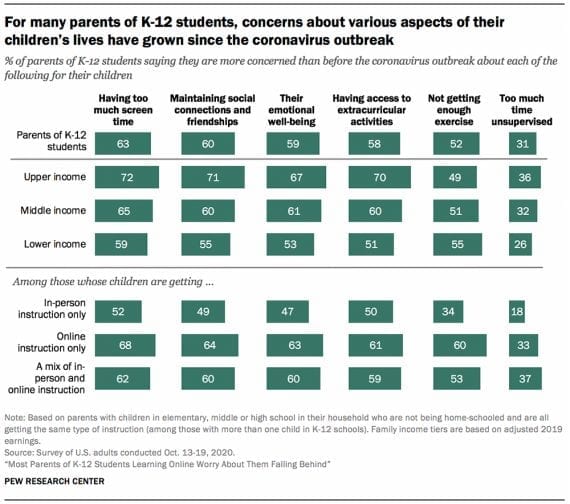January 2021 can represent a beginning for content marketers to build communities, stream live videos, write about national holidays, report industry news, or visually expose interesting industry data.
Content marketing is the act of curating or creating content such as articles, podcasts, videos, and graphics and then publishing and promoting that content to attract, engage, and retain an audience of customers and potential customers.
What follows are five content marketing ideas you can try this January.
1. Create a Content-driven Community
“In today’s highly digital and connected society, it’s funny to think people can still feel disconnected from others. With so many people who communicate online, behind screens, this connected world can actually feel rather lonely at times. This goes for personal relationships as well as business relationships — specifically between brands and their customers as well as brands and their employees,” wrote Kristen Baker, a HubSpot marketing manager, in the company’s “Ultimate Guide to Community Management.”
“So, what is it that has people feeling a disconnect to others and the companies they do business with?” asked Baker. “It’s a lack of community.”
Content marketing has always been a driver of community. Think about how Netflix and Mustache, a content marketing agency, created a “community” across several social media platforms using the @NetflixIsAJoke handle.
Publishing funny videos, memes, and posts, Netflix garnered almost 3.5 million followers, fans, and subscribers across Facebook, Instagram, Twitter, and YouTube.

Netflix built a community of social media followers and fans across several platforms.
For your company’s January 2021 content marketing, consider taking this one step further and create a private, content-driven community for your customers.
You could use a Facebook Group, or, better still, start a community using Mighty Networks, Zapnito, Tribe, or similar platforms.
To attract members, invite each new customer to join your private community when she makes a purchase. Then fill your community with compelling content.
2. Start a Live Video Series
January is a time to try new things. For many of your customers, those new things might come in the form of a New Year’s resolution. So why not do something similar and resolve to provide a live stream video at least once per week for all of 2021?
Your weekly live stream could be focused on the products you sell. For example, the 44 East Boutique in Meridian, Idaho, live streams regularly — showing products or even helping customers shop via Facebook Live and Instagram TV.

44 East Boutique started live streaming during the Covid shutdown but has continued after the store has reopened.
Kayloni Perry and her mother and business partner, Cheryl Jones, turned to live streaming in the midst of the coronavirus shutdown. They have since continued to live stream for as much as two hours at a time.
For your live stream, you could:
- Promote products,
- Interview customers or industry experts,
- Teach skills related to the products you sell,
- Offer up industry news,
- Tell jokes (see Netflix community mentioned above).
3. Focus on National Holidays
The month of January is full of national holidays, including New Year’s Day, Martin Luther King, Jr. Day, and lesser-known days, such as National Bloody Mary Day, National Science Fiction Day, and National Hat Day.

New Year’s Day, which is often celebrated with fireworks, is an example of a holiday you might write about.
For your company’s January 2021 content marketing, pick one or two of these holidays and create articles that describe the history of the event, offer suggestions of how to celebrate, or connect the holiday to your business or your products.
Here are a few examples.
- An online Christian bookstore might publish “How Faith Impacted the Civil Rights Movement: An MLK Day Retrospective.”
- A fitness equipment retailer might write, “The New Year’s Resolution Bootcamp Guide.”
- An apparel store could create a video called, “How to Put a Lid on National Hat Day.”
If these topics seem too serious, you could always try National Belly Laugh Day on January 24. For this one, you might publish a few jokes.
4. Industry News Stories
In January 2021, ask yourself if your business has an opportunity to become a real news source for your industry.
This could be a challenge. It would require a relatively large investment in your content marketing, but it may be rewarding both in terms of audience engagement and search engine benefits.
As an example, look at this recent article from the blog of Keen footwear, “Kids In Costa Rica Want Their Rivers Back.”

A child works along the river. The image comes from Keen’s news-like coverage of a conservation program it helped to fund.
The article is consistent with Keen’s brand, which includes a strong focus on conservation. It is also similar to a feature in a traditional magazine.
Here are a couple of example paragraphs from the Keen article.
“Meet Natalie. She is 8 years old and lives in the Osa Peninsula, Costa Rica, one of the most biodiverse places on Earth. Her school was canceled for two weeks, and instead of sleeping in or watching TV, she came out in the field with us every day at 7 a.m., always with a big smile and hug, to help plant native trees to reforest the river on her great-grandmother’s cattle farm. Her dream is to see the river healthy and clean again so she can swim and bathe in it, just like her grandmother did when she was a little girl…
“The idea to restore [the] river came about because Osa Conservation has been working since 2014 with a dedicated group of local citizen scientists and schoolchildren to monitor river water quality. We love it when kids raise their hands with curious faces to learn more about the great diversity of wildlife that exists in the rivers, excitedly ruffle through river rocks and leaves to find insect larvae, or debate the results of a water pH analysis.”
5. Chart of the Week/Month
If a picture is worth 1,000 words, perhaps, a chart of the week or month could be worth a few thousand.
Here the idea is to surface interesting or surprising facts related to the industry your business serves in the form of a chart.
Imagine that you are the content marketer for an online store specializing in educational toys and games for children. You could publish a chart like the one the Pew Research Center released in October 2020 titled “Most Parents of K-12 Students Learning Online Worry About Them Falling Behind.”

“Majorities of parents of K-12 students say that, compared with before the coronavirus outbreak, they are more concerned,” according to the Pew Research Center.
Your weekly or monthly chart might include curated data from any number of sources that you combine to create an interesting chart or original research drawn from your own surveys.







